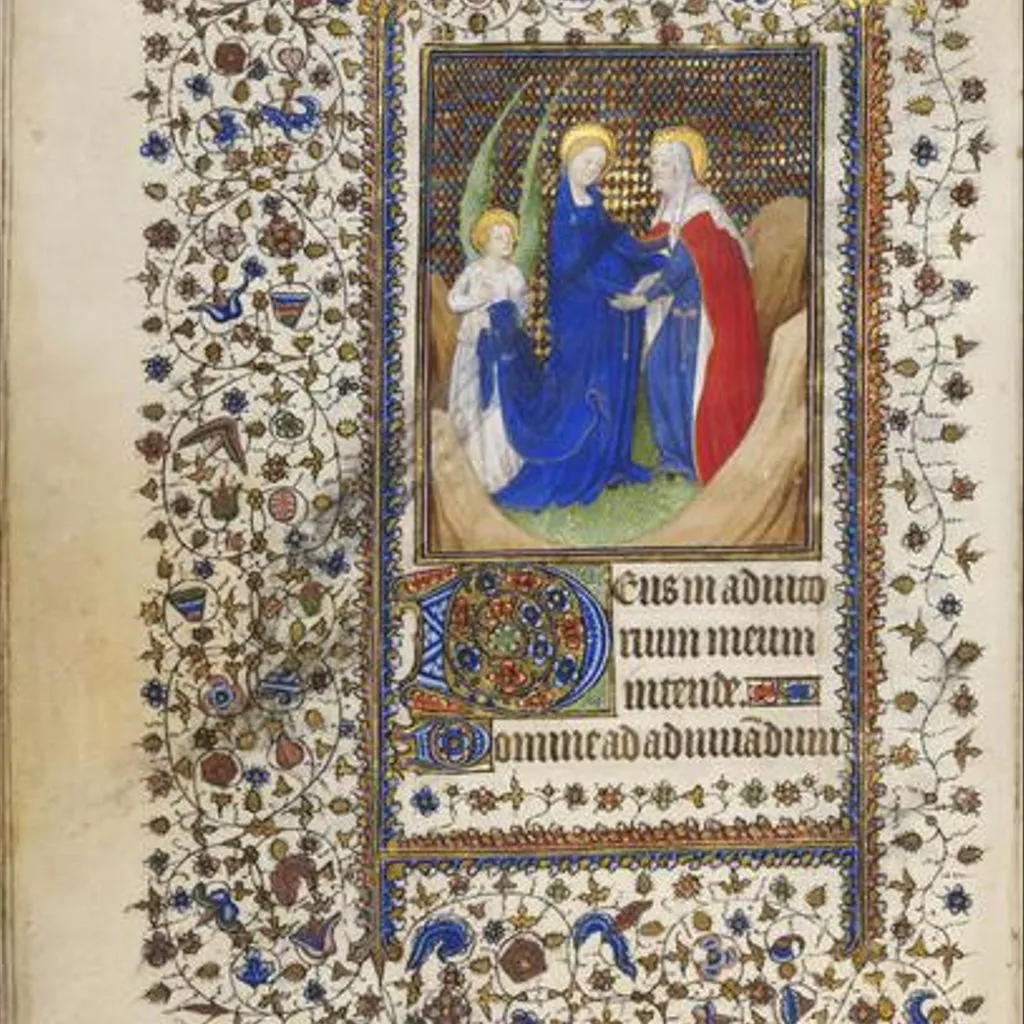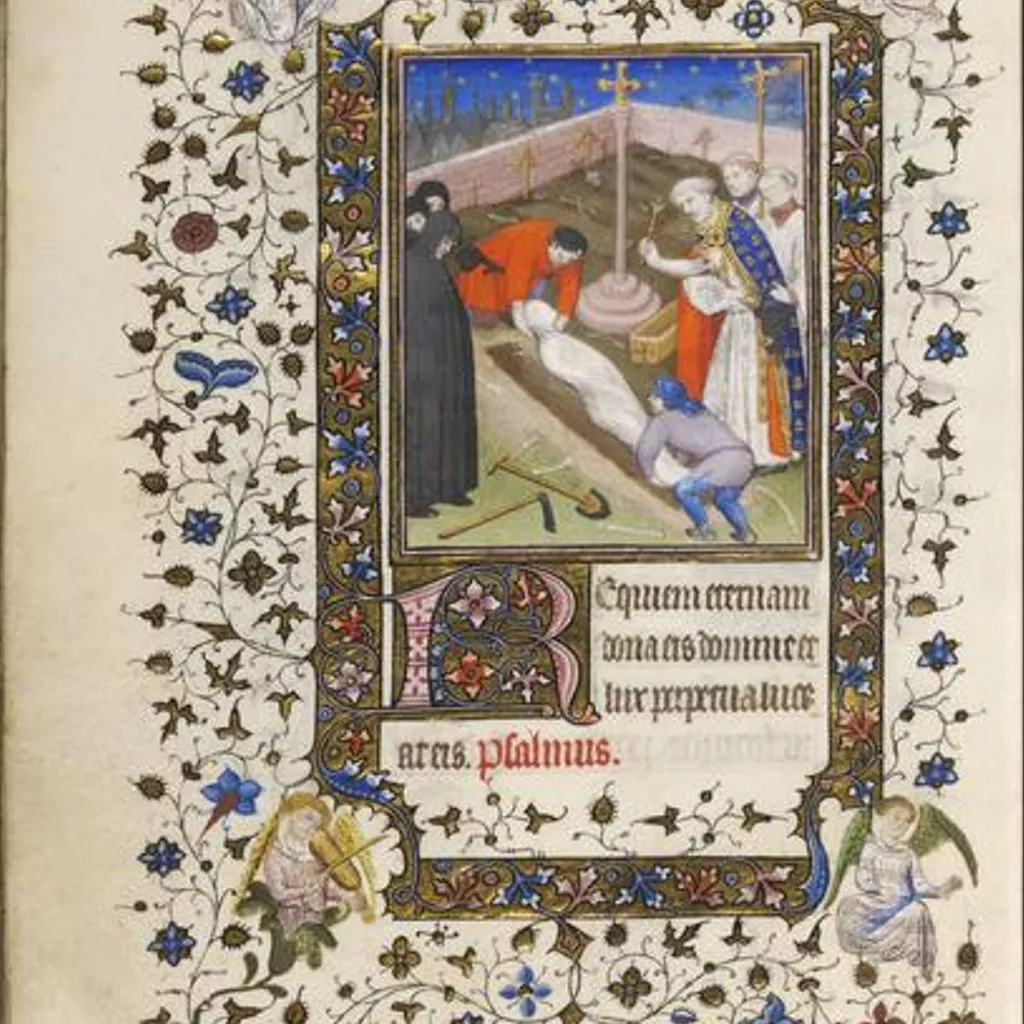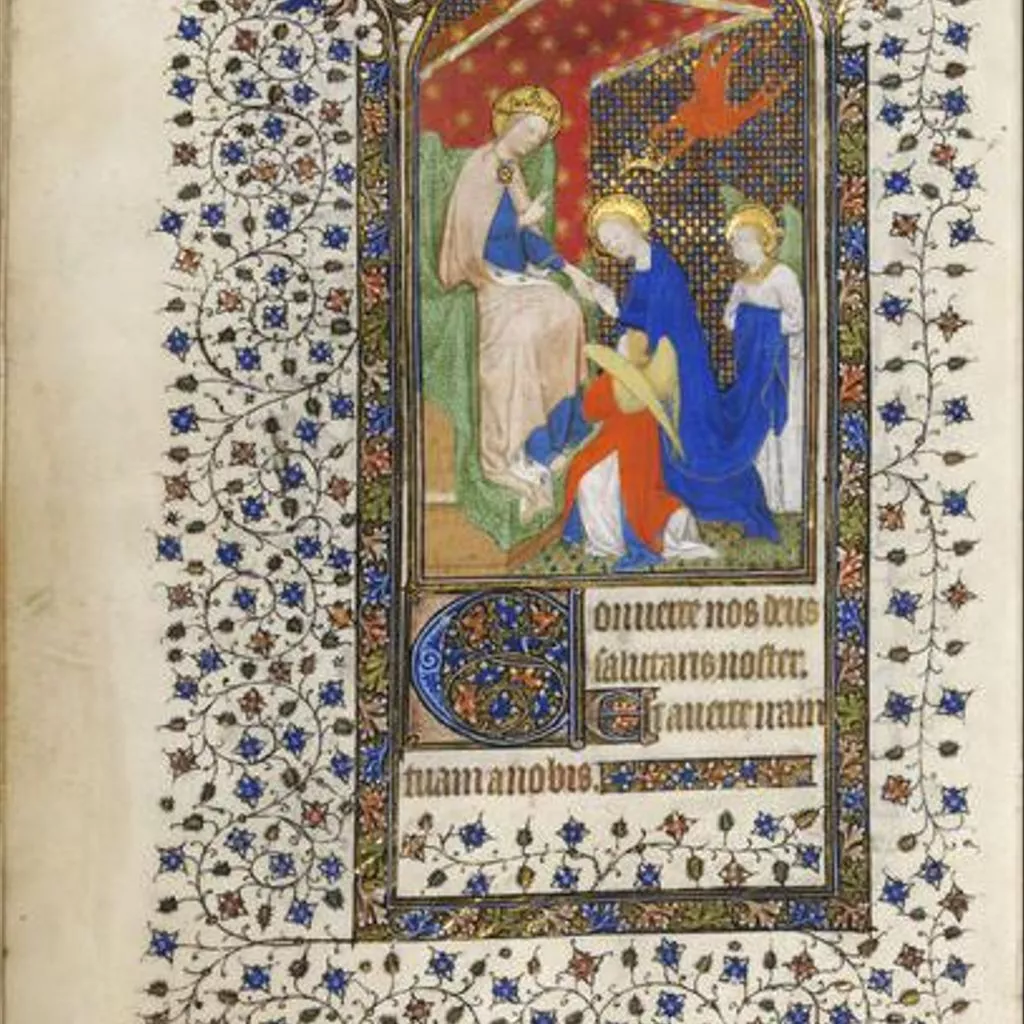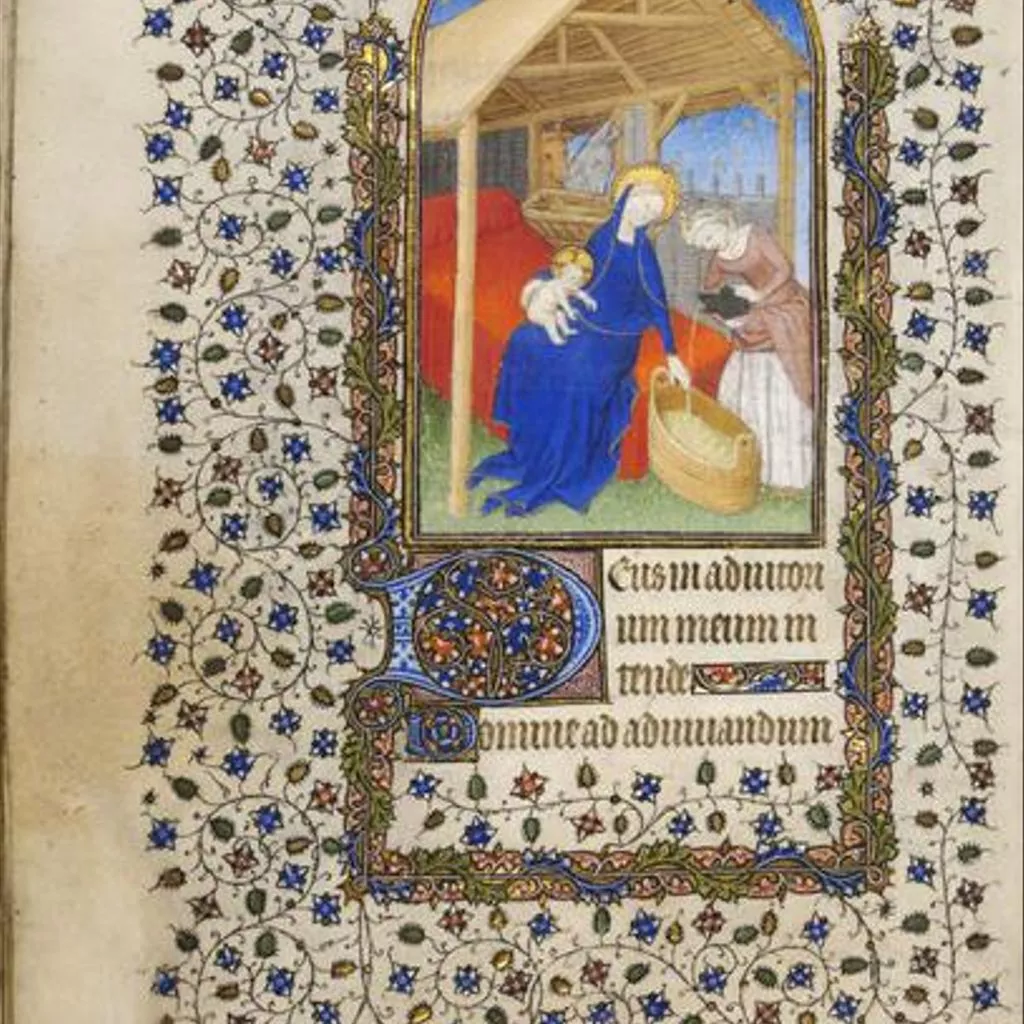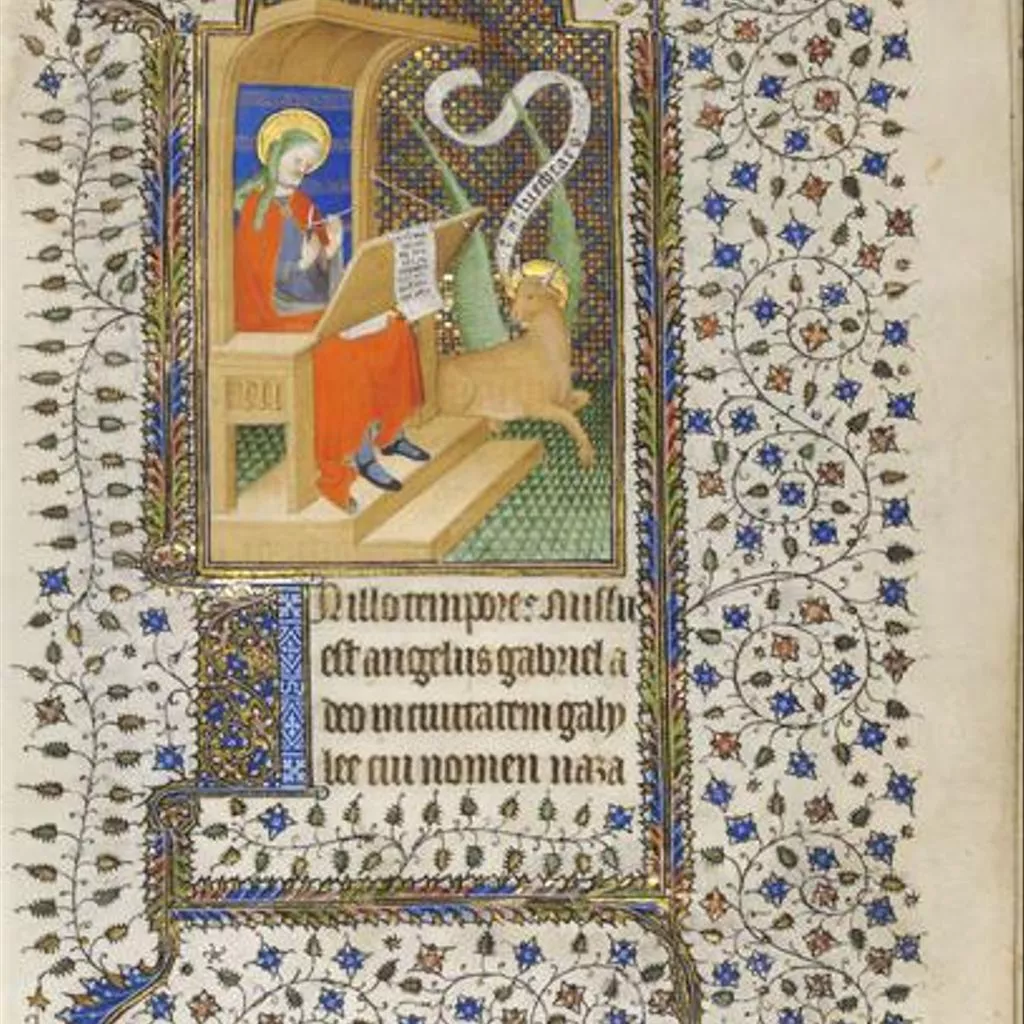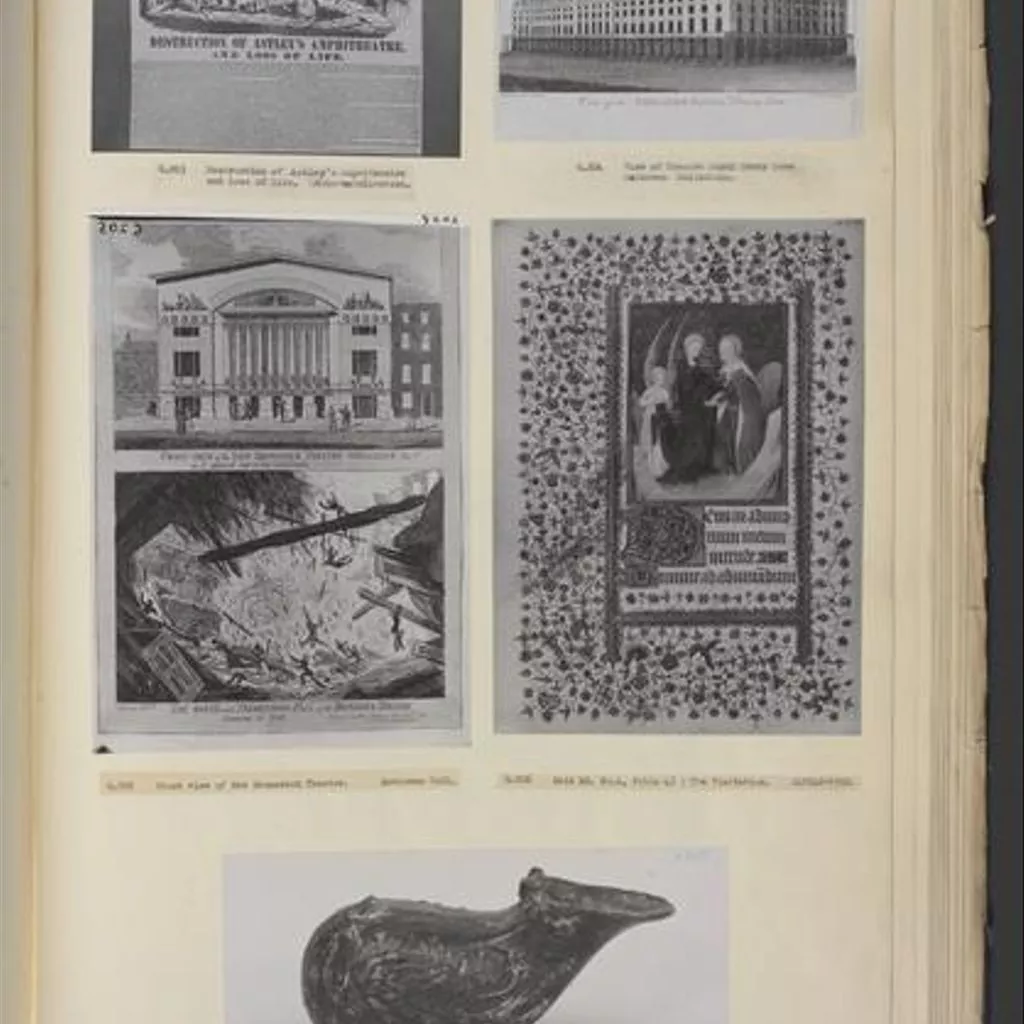Description
Unique
Manuscript, Book of Hours, France (Paris), ca. 1405-1415.
Foliation: parchment. i (medieval parchment, conjoint with pastedown) + 189 + ii (medieval parchment, conjoint with pastedown) ff.
Number of lines: 14 lines.
Language: Latin and French.
Script: Gothic textura bookhand.
Textual content:
ff. 1r-12v: Calendar in French.
ff. 13r-18r: Gospel pericopes (lacking leaves).
ff. 19r-87r: Hours of the Virgin, Use of Paris (lacking leaves).
ff. 88r-105v: Penitential Psalms (lacking leaves).
ff. 106r-110r: Hours of the Cross (lacking leaves).
ff. 111r-115v: Hours of the Holy Spirit.
ff. 116r-164v: Office of the Dead, Use of Paris.
ff. 164v-172v: Prayers to the Virgin.
ff. 173r-179r: Mass of the Virgin.
f. 179v, 186r-189r: Requiem Mass.
ff. 180r-185r: Fifteen Joys of the Virgin, in French, lacking the incipt.
f. 185v: Prayers to five wounds of Christ.
Decoration: 10 half-page miniatures on diapered grounds, most with ivy-leaf borders (ff. 13r, 15r, 16r, 43v, 56v, 66r, 81v, 173r, 179v, 185v). Some pages have borders on long sides with branching ivy-leaves, illuminated initials and line-fillers. All folios have tendrils foliage with burnished gold leaves.
Artists: All the miniatures except for fol. 16r are attributed to the Mazarine Master named after Paris, Bibliothèque Mazarine MS 469. Fol. 16r is attributed to the Egerton Master, named after London, British Library, Egerton MS 1070.
Binding:
(1) 1980, England: rebound by Roger Powell, on 6 double cords, with head and tail bands in green and yellow silk; white tawed leather over original wooden boards.
(2) 18th century, France: quarter binding in brown calf, with gold tooling on the spine.
(3) Medieval binding: wooden boards, quarter-cut beech, recesses on upper cover cut for clasps.
This early 15th-century manuscript is a book of hours, the most common devotional book used by laypeople in the late Middle Ages. Books of hours take their name from the fact that their core text, the Little Office of the Virgin, is divided into eight hours, from Matins to Compline, meant to be recited throughout the day and modelled on the Divine Office.
This Book of Hours is a typical example of early 15th-century Parisian book production. The hands of two Parisian miniaturists have been recognised in its miniatures: the Mazarine Master and the Egerton Master (f. 16r only), who frequently collaborated, especially during the period between 1407 and 1413. While most scenes are set against decorative backgrounds, the starry sky becoming paler towards the horizon creates a sense of depth in the miniature introducing Prime (f. 56v). Rather than a standard Nativity scene, it shows the Virgin testing the water prior to bathing Christ Child. All miniatures are delicately painted in vibrant colours and all are surrounded by stylised spindly foliage, to the exception of the page with St Matthew where the Egerton Master was responsible for both the miniature and the fleshy leafy scrolls in the borders (f. 16r).
Unfortunately, the manuscript had a tumultuous later life: not only was some of it rebound out of order, but many of its leaves also went astray, including at least ten with miniatures.
MANUSCRIPT BOOK OF HOURS About 1405-15
The Book of Hours is a type of prayer book used by laypeople. It appeared in the 13th century and ultimately derived from the Psalter. In this example, the calender is followed by passages from the Four Gospels, starting with the Gospel of St John, who is represented here.
France, Paris
Ink on parchment, with pigment and gold
Given by George Reid
Museum no. MSL/1902/1646 (Reid 4)
[24/03/2018]












